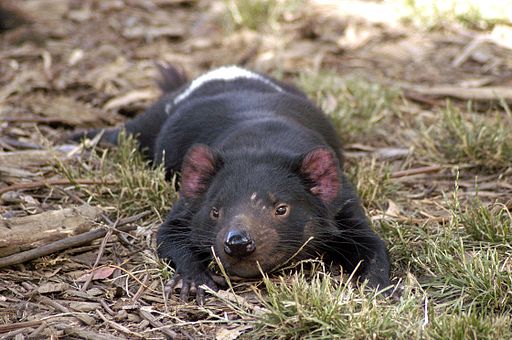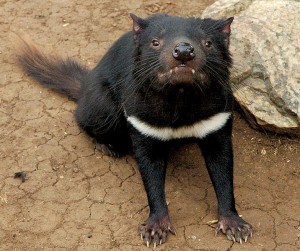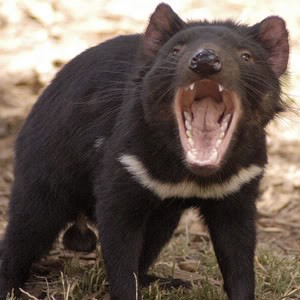The Devil’s Return
New research has assessed the ecological impact of returning Tasmanian devils to the mainland and the results show that doing so would improve Australia’s biodiversity.
 Image: By Wayne McLean ( jgritz) (Own work) [CC BY 2.0 (http://creativecommons.org/licenses/by/2.0)], via Wikimedia Commons
Image: By Wayne McLean ( jgritz) (Own work) [CC BY 2.0 (http://creativecommons.org/licenses/by/2.0)], via Wikimedia Commons Tasmanian devils once roamed the entire Australian continent, but around 3,000 years ago they went extinct on the mainland. They are now confined to Tasmania although even here populations are decreasing, thanks to devil facial tumour disease. New research however, has assessed the ecological impact of returning Tasmanian devils to the mainland and the results show that doing so would improve Australia’s biodiversity.
It is believed that Tasmanian devils died out on mainland Australia because of hunting by dingoes. Today, dingoes are culled to protect livestock. This has shifted the ecological balance and paved the way for invasive predators such as red foxes and feral cats to negatively affect native mammals. With Australia’s extinction record already in pretty bad shape, talk has turned to bringing back Tasmanian devils in order to limit the spread of these predators.
Ecologists from the University of New South Wales in Sydney assessed for the first time the impact of reintroducing Tasmanian devils to forest ecosystems in south-eastern parts of New South Wales. Lead author of the study, PhD candidate Daniel Hunter, said: “There are large areas where the dingo is gone and we need a predator who can suppress fox numbers. The devil is the obvious answer. It doesn’t pose as serious a risk to livestock, and it has played a major role in stopping foxes from establishing a foothold in Tasmania.”
The team reviewed previous studies to understand more about the ecological impacts of dingoes, devils and foxes, and applied this to models that tried to predict how a range of ecosystems would respond to the presence of devils. The models mapped different scenarios in which the re-introduced devils co-existed with varying populations of other predators – abundant, reduced or completely eradicated.
The results of the study, published in Biological Conservation, highlight the potential benefit of using the devil as a replacement apex predator. This would lead to fewer foxes and feral cats, as well as grazing herbivores like wallabies that remove the vegetation used by small animals to hide from predators. There would be benefits for small and medium-sized animals, such as bandicoots and ringtail possums, and the devils themselves would also benefit. Their re-introduction could help to ensure their long-term survival by increasing population numbers.
Co-author Associate Professor Mike Letnic says: “We suspect that they help control the fox and cat populations by directly attacking them and their young. There is very good evidence from Tasmania that cats modify their movements and numbers are lower where there are healthy devil populations. Devils aren’t a silver bullet, but we think that they could do a lot of good on the mainland, and this study indicates that a monitored process of reintroduction could actually work. We need to take action to arrest the extinction crisis we have in Australia, and that requires being bold and trying something new.”




No comments yet.